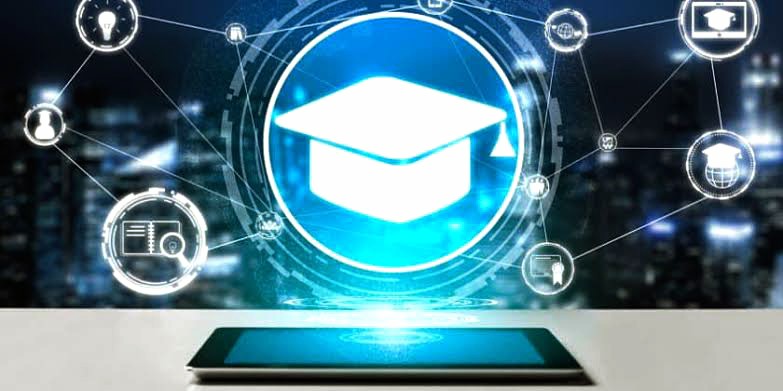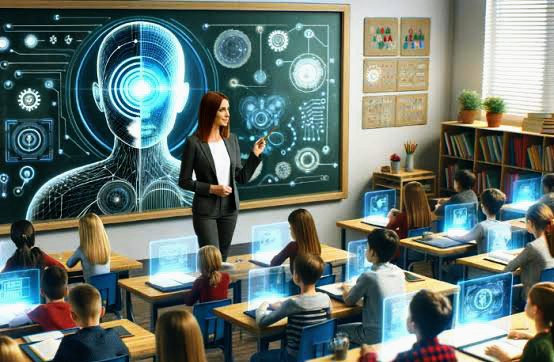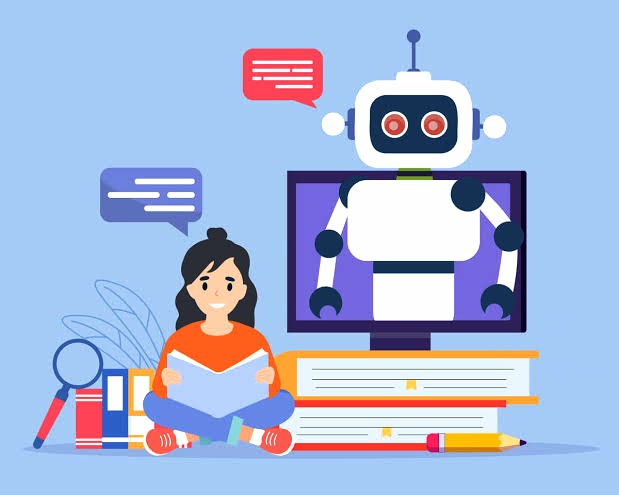
AI in Education: The Role and Impact of Artificial Intelligence

Artificial Intelligence (AI) is becoming a cornerstone in various industries, and education is no exception. The integration of AI in education brings about significant changes, enhancing learning experiences and administrative processes. From personalized learning plans to efficient administrative operations, Artificial Intelligence revolutionizes how we deliver and receive education.
Personalized Learning Pathways

One of the most transformative impacts of AI in education involves creating personalized learning pathways. Traditional educational models often adopt a one-size-fits-all approach, which can be limiting. However, AI-powered educational tools analyze individual student data to tailor learning experiences according to each student’s unique needs and learning pace.
For example, platforms like DreamBox and Knewton use advanced algorithms to assess student performance in real-time, adjusting the difficulty level of tasks to match their capabilities. Consequently, this ensures that students neither feel bored by easy material nor overwhelmed by challenging content. As a result, students learn more effectively and at their own pace, enhancing overall academic performance.
In addition to providing personalized learning experiences, AI can also help identify and address learning gaps. By continuously monitoring student progress, AI systems can highlight areas where students might be struggling. This allows educators to intervene promptly and provide targeted support, ensuring that no student is left behind. This proactive approach not only improves individual student outcomes but also contributes to reducing dropout rates.
Supporting Teachers with AI

In addition to benefiting students, AI plays a crucial role in supporting teachers. Intelligent tutoring systems provide supplementary instruction outside the classroom, offering students immediate assistance and feedback. These systems simulate one-on-one tutoring by guiding students through problem-solving processes, thus reinforcing classroom learning.
Moreover, AI alleviates some of the administrative burdens on teachers. For instance, automated grading systems efficiently handle multiple-choice tests and even evaluate certain aspects of essay writing. This, in turn, frees up teachers’ time, allowing them to focus on more complex and interactive teaching activities. Additionally, AI-driven analytics help educators identify students who need extra help, enabling timely interventions.
AI also aids in lesson planning. By analyzing data on student performance and engagement, AI can suggest resources and activities tailored to the class’s needs. This personalized approach ensures that lessons are relevant and engaging for all students. Furthermore, Artificial Intelligence can provide teachers with insights into effective teaching strategies, helping them continuously improve their instructional methods.
Streamlining Administrative Tasks

Beyond the classroom, AI streamlines various administrative tasks within educational institutions. AI-driven systems manage scheduling, resource allocation, and admissions processes. For example, chatbots handle routine inquiries from students and parents, providing instant responses to questions about admissions, course availability, and campus services.
Furthermore, predictive analytics forecast enrollment trends, helping institutions plan for future staffing and infrastructure needs. Consequently, this ensures efficient resource allocation and that the institution meets the needs of its student body.
AI also enhances the efficiency of administrative processes by automating routine tasks. For instance, Artificial Intelligence can manage attendance tracking, grading, and communication with students and parents. This reduces the administrative workload on teachers and staff, allowing them to focus more on educational activities. Moreover, AI-powered systems can streamline the admissions process by quickly processing applications and providing timely feedback to applicants.
Enhancing Accessibility and Inclusivity

Furthermore, AI holds great promise for making education more accessible and inclusive. For students with disabilities, AI-powered tools provide substantial support. Applications like speech-to-text and text-to-speech help students with visual or auditory impairments engage fully in their education. Additionally, AI aids in creating personalized learning materials that cater to each student’s specific needs, fostering an inclusive learning environment.
Moreover, language translation tools powered by AI, such as Google Translate, help break down language barriers in multilingual classrooms. This allows students from diverse linguistic backgrounds to participate fully in their education, promoting a more inclusive and collaborative learning environment.
AI also supports inclusive education by providing alternative learning formats. For example, AI can convert text-based materials into audio or braille formats, making them accessible to students with different learning preferences and needs. This ensures that all students have equal access to educational resources, regardless of their abilities or backgrounds. Additionally, Artificial Intelligence can assist in identifying and addressing the specific needs of individual students, helping educators provide tailored support.
AI in Education: Ethical Considerations and Challenges

While the benefits of AI in education are substantial, important ethical considerations and challenges must be addressed. Data privacy is a significant concern, as Artificial Intelligence systems require access to large amounts of personal data to function effectively. Ensuring secure collection, storage, and use of this data is paramount. Therefore, educational institutions must implement robust data protection measures and comply with relevant regulations like GDPR and FERPA.
Additionally, there is a risk of exacerbating existing inequalities. Schools with more resources can implement advanced AI technologies more readily than underfunded institutions, potentially widening the gap between them. Thus, ensuring equitable access to AI’s tools and resources is crucial to avoid deepening educational disparities.
Ethical considerations also include the potential for bias in AI’s algorithms. If not carefully designed and monitored, Artificial Intelligence systems can perpetuate existing biases in education. For example, biased data can lead to unfair treatment of certain student groups. Therefore, it is essential to develop transparent and accountable AI systems that prioritize fairness and equity. This requires ongoing collaboration between educators, policymakers, and technology developers to ensure that AI in education serves the best interests of all students.
The Future of AI in Education

Looking ahead, the role of Artificial Intelligence in education will likely expand further. Emerging technologies such as virtual reality (VR) and augmented reality (AR), powered by AI, could offer immersive and interactive learning experiences. For instance, students might explore historical sites in VR or conduct virtual science experiments, making learning more engaging and effective.
Additionally, AI’s capacity to analyze vast amounts of educational data could also lead to new insights into effective teaching practices and educational policies. By identifying patterns and outcomes, AI can inform evidence-based approaches to education, potentially transforming educational strategies on a broad scale.
In summary, AI is set to play an important role in the future of education, offering personalized learning experiences, enhancing teaching and administrative efficiency, and promoting accessibility and inclusivity. However, it is essential to maneuver the ethical challenges and ensure equitable access to these technologies. As we continue to integrate Artificial Intelligence into education, the potential to improve learning outcomes and create more effective educational systems is immense.
In conclusion, the integration of Artificial Intelligence in education holds immense potential for transforming the way we teach and learn. By leveraging AI’s capabilities, educators can provide personalized and engaging learning experiences that cater to the diverse needs of students. Artificial Intelligence also streamlines administrative processes, making educational institutions more efficient and responsive. However, it is crucial to address the ethical challenges and ensure that AI is used responsibly and equitably. With careful planning and collaboration, Artificial Intelligence can revolutionize education and pave the way for a brighter future for all learners.
Click to get more on AI in Education
Related Topics
An Article on Artificial Intelligence
E-Learning: Education for the Digital Age
Microlearning: Definition, Examples and Platforms



Ai is very helpful to we students indeed